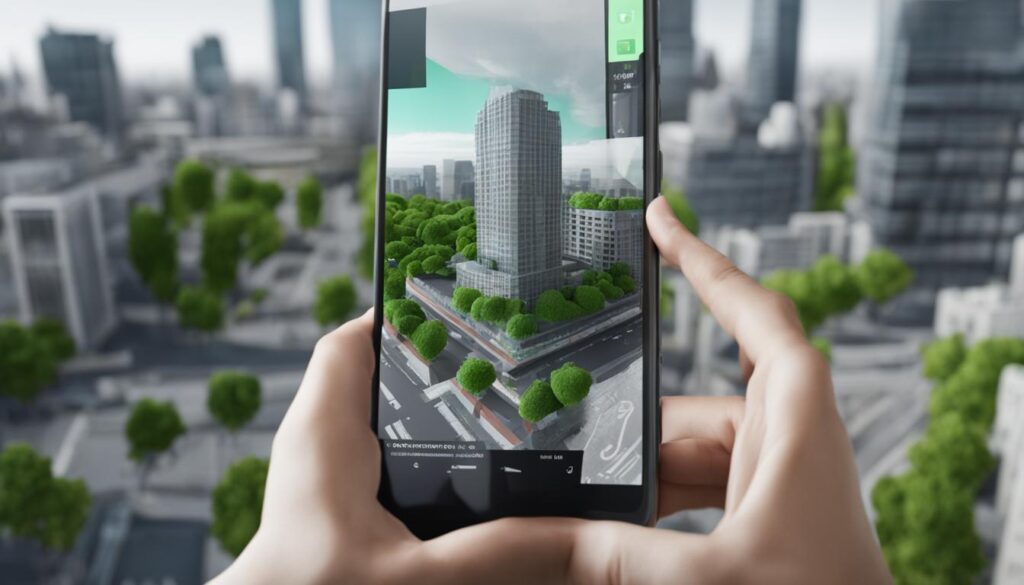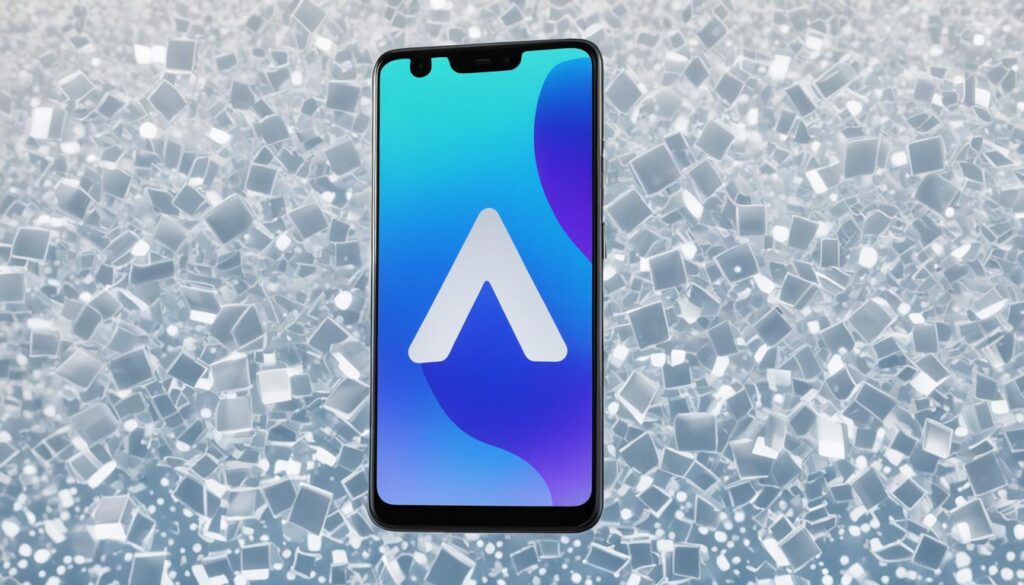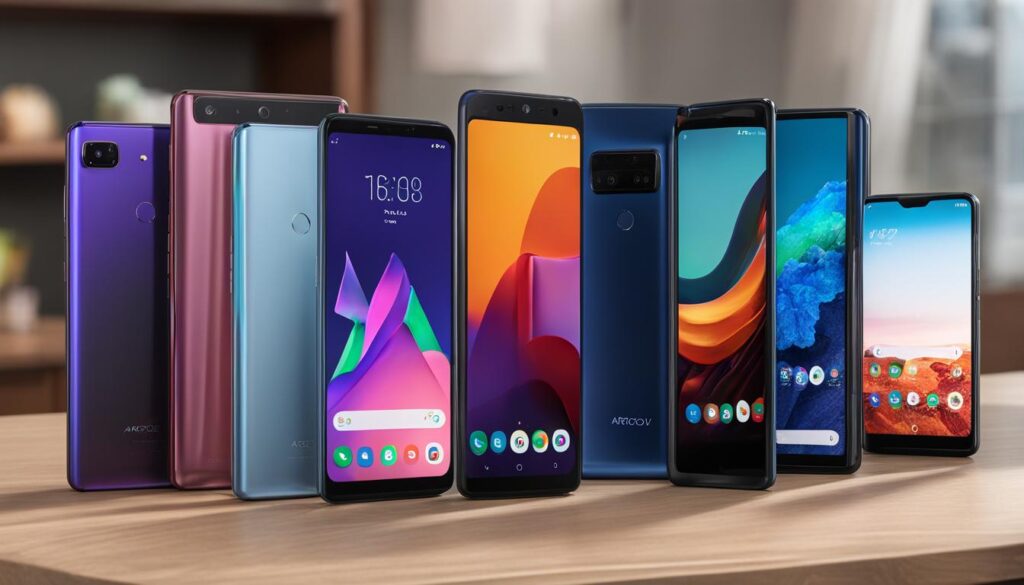Augmented reality (AR) has become increasingly popular, allowing users to experience interactive and immersive digital content in the real world. With the rise of AR apps and games, you may be wondering if all Android phones have the capability to support augmented reality. In this article, we will explore the compatibility of Android phones with AR and provide insights into the specifications and features needed for AR support on Android devices.
Contents
- 1 What is ARCore and How Does it Work?
- 2 Which Android Phones Can Run ARCore?
- 3 Why is ARCore Support Important for Android Phones?
- 4 Understanding ARCore Specifications for Android Phones
- 5 Comparison of ARCore-Compatible Android Phones
- 6 Conclusion
- 7 FAQ
- 7.1 Do all Android phones support augmented reality (AR)?
- 7.2 What is ARCore and how does it work?
- 7.3 Which Android phones can run ARCore?
- 7.4 Can my device run ARCore if it’s not on the supported list?
- 7.5 Why is ARCore support important for Android phones?
- 7.6 What are the specifications needed for ARCore support on Android phones?
- 7.7 Which Android phone brands offer ARCore-compatible devices?
- 7.8 Does ARCore support come standard on all Android phones?
- 8 Source Links
Key Takeaways:
- Not all Android phones support augmented reality out of the box.
- ARCore is Google’s software development kit that enables AR experiences on compatible Android devices.
- ARCore utilizes the device’s camera and motion sensors to detect feature points and track the phone’s position and orientation in real-time.
- Google manually tests and certifies devices for optimal ARCore compatibility.
- If your device is not on the supported list, alternative options may be available, but proceed with caution.
What is ARCore and How Does it Work?
ARCore, also known as Google Play Services for AR, is a software development kit (SDK) that enables developers to create immersive augmented reality (AR) apps for Android devices. Unlike its predecessor, Project Tango, which relied on dedicated hardware, ARCore adopts a software-only approach, making it accessible to a wider range of devices.
ARCore utilizes the camera and motion sensors present in Android smartphones to create a compelling AR experience. By leveraging the device’s camera, ARCore detects feature points in the environment, such as planes and objects, to understand the surrounding space.
This powerful SDK employes a technique called simultaneous localization and mapping (SLAM), which allows the device to map its surroundings in real-time. By continuously tracking the camera’s pose and leveraging feature points, ARCore accurately overlays virtual objects onto the real world.
ARCore bridges the gap between the virtual and physical realms, creating an interactive and immersive AR experience right on your Android phone.
The key components of ARCore include:
- Camera: ARCore utilizes the camera to capture the real-world environment and track its movement.
- Motion Sensors: The device’s motion sensors, including the accelerometer and gyroscope, help ARCore track the device’s orientation and movement.
- SLAM: Simultaneous localization and mapping enable ARCore to understand the device’s position and map the real-world environment.
- Planes: ARCore detects horizontal and vertical planes in the real-world, allowing virtual objects to be placed and interact with the environment.
- Camera Pose: ARCore continuously tracks the camera’s position and pose in real-time, ensuring virtual objects align with the real-world environment.
- Feature Points: By identifying and tracking feature points in the environment, ARCore creates a spatial understanding for accurate AR experiences.
ARCore empowers developers to bring AR experiences to life, enabling users to interact with virtual objects, explore immersive games, and enhance everyday tasks through augmented reality apps.
Which Android Phones Can Run ARCore?
Google manually tests and certifies devices to ensure they work optimally with ARCore. While there is no official list of supported devices, a wide range of high-end and mid-range Android devices are compatible with ARCore. The minimum Android version required is 7.0 Nougat, but some devices may require newer versions.
The certification process involves checking camera and motion sensor quality, as well as the device’s CPU performance. Several hundred Android devices are supported by ARCore, offering users a diverse selection of phones.
ARCore Supported Android Phones
| Manufacturer | Device Model |
|---|---|
| Pixel 5 | |
| Samsung | Galaxy S21 Ultra |
| OnePlus | 9 Pro |
| Xiaomi | Mi 11 |
Here are some examples of popular Android phones that support ARCore:
- Google Pixel 5
- Samsung Galaxy S21 Ultra
- OnePlus 9 Pro
- Xiaomi Mi 11
Please note that the availability of ARCore support may vary depending on the specific model and region. It’s always recommended to check the official documentation or contact the manufacturer for the most up-to-date information on ARCore compatibility.

Pros and Cons of Alternative Options
| Option | Pros | Cons |
|---|---|---|
| PTC Vuforia 9.0 for Unity |
|
|
| ARCore-for-All with ARCore-Patch |
|
|
Why is ARCore Support Important for Android Phones?
ARCore support is crucial for Android phones as it unlocks a world of augmented reality experiences. By enabling ARCore compatibility, your device becomes capable of running a multitude of interactive AR applications, such as engaging games, virtual try-ons, and informative educational tools.
Not only does ARCore support enhance your smartphone’s functionality today, but it also future-proofs your device for the advancements in AR technology that lie ahead. As the popularity of augmented reality continues to grow, more and more app developers will harness the power of ARCore, creating a wider range of immersive AR experiences. By ensuring your device is ARCore compatible, you can stay ahead of the curve and enjoy the latest innovations in augmented reality.
In addition to broadening your AR experiences, having ARCore support also impacts app availability. Many AR apps are specifically designed for ARCore-enabled devices, meaning you may miss out on certain applications if your phone does not support ARCore. By having ARCore compatibility, you open the door to a larger selection of AR apps and enhance your overall smartphone experience.
| Benefits of ARCore Support for Android Phones: |
|---|
| 1. Enhanced AR experiences: Enjoy interactive games, virtual try-ons, and educational apps. |
| 2. Future-proofing: Prepare your device for upcoming AR advancements. |
| 3. Expanded app availability: Access a wider range of AR apps designed for ARCore-enabled devices. |
By embracing ARCore support, you unlock the full potential of your Android phone, enriching your digital experiences with the exciting world of augmented reality.

Understanding ARCore Specifications for Android Phones
For an Android phone to support ARCore, it needs to meet certain specifications. These specifications ensure optimal performance and a seamless augmented reality experience. Here are the key specifications to consider:
Camera Quality
The camera quality plays a crucial role in ARCore’s motion tracking capabilities. A high-quality camera allows for accurate detection of the surroundings and precise overlay of virtual objects. It enables the phone to capture detailed images and track motion seamlessly.
Motion Sensor Quality
The motion sensors, including gyroscope and accelerometer, contribute to determining the movements of the device in real-world space. Accurate motion sensors ensure that the virtual objects align properly with the physical environment, offering a realistic and immersive experience.
Powerful CPU
A powerful CPU is essential for handling the real-time calculations required for AR experiences. It enables the device to process complex graphics and perform calculations simultaneously, ensuring smooth performance and reducing latency.
Hardware Integration
The hardware design of the device should integrate seamlessly with the CPU to achieve optimal performance. Close collaboration between the hardware components and the CPU enhances the device’s ability to handle the computational demands of ARCore, resulting in a more immersive and responsive augmented reality experience.
| Camera Quality | Motion Sensor Quality | Powerful CPU | Hardware Integration |
|---|---|---|---|
| High-resolution camera with accurate color reproduction | Precision gyroscope and accelerometer | Fast and efficient CPU with multiple cores | Optimized hardware components for ARCore |
| Advanced image processing capabilities | Low-latency and high-precision sensors | Advanced GPU for graphics rendering | Efficient heat dissipation for extended AR usage |
| Optical image stabilization for steady tracking | Real-time sensor fusion for accurate positioning | Ample RAM for smooth multitasking | Optimal thermal management for sustained performance |
By ensuring that your Android phone meets these specifications, you can enjoy the full capabilities of ARCore and have an immersive augmented reality experience. The combination of high-quality camera, accurate motion sensors, powerful CPU, and seamless hardware integration sets the foundation for exceptional AR performance on your device.
Comparison of ARCore-Compatible Android Phones
Numerous manufacturers offer a wide range of ARCore-compatible devices, ensuring a diverse selection for users interested in augmented reality experiences. Some popular manufacturers known for their ARCore support include Google, Asus, HMD Global (Nokia), HTC, Huawei, Infinix, Kyocera, Lenovo, LG, Motorola, and OnePlus. Each manufacturer offers various device models with ARCore compatibility, providing different features and specifications.
To assist users in making informed decisions, here is a comprehensive comparison of selected ARCore-compatible Android phones:
| Manufacturer | Device Models | Comments |
|---|---|---|
| Pixel 5, Pixel 4a, Pixel 4 XL | Offers a seamless AR experience with optimized hardware and software integration. | |
| Asus | ROG Phone 5, ZenFone 8, ZenFone 7 | A popular choice among gaming enthusiasts due to its powerful specifications and AR capabilities. |
| HMD Global (Nokia) | Nokia 8.3, Nokia 7.2, Nokia 6.2 | Known for providing stock Android experiences, along with reliable ARCore support. |
| HTC | HTC U11, HTC U12+, HTC U Ultra | Offers a range of devices with ARCore compatibility, providing users with an enhanced AR experience. |
| Huawei | Huawei P40 Pro, Huawei Mate 40 Pro, Huawei P30 Pro | Known for its advanced camera technology, enabling immersive and high-quality AR experiences. |
| Infinix | Infinix Note 10 Pro, Infinix Zero 8, Infinix Hot 10 | Provides affordable options with ARCore support, making augmented reality accessible to a wider audience. |
| Kyocera | Kyocera DuraForce Pro 2, Kyocera DuraForce XD, Kyocera DuraForce E6560 | Known for rugged devices that offer ARCore compatibility, ideal for outdoor and industrial use. |
| Lenovo | Lenovo Legion Phone Duel, Lenovo Z6 Pro, Lenovo K10 Note | Offers a range of devices suitable for gaming enthusiasts and multimedia consumption, with ARCore support. |
| LG | LG G8 ThinQ, LG V60 ThinQ, LG V50 ThinQ | Known for incorporating ARCore features into their flagship devices, providing a premium AR experience. |
| Motorola | Moto G Power, Moto G Stylus, Moto E7 Plus | Provides budget-friendly devices with ARCore compatibility, allowing users to enjoy augmented reality at an affordable price. |
| OnePlus | OnePlus 9 Pro, OnePlus 9, OnePlus 8T | Known for its sleek design and excellent performance, providing a smooth and immersive AR experience. |
This is a selection of ARCore-supported devices from various manufacturers, with each offering unique features and capabilities. For a complete list of ARCore-compatible Android phones, users can refer to the official ARCore-supported devices documentation.

With a wide range of ARCore-supported devices available, users have the freedom to choose a phone that best suits their needs and preferences. Whether you’re a gaming enthusiast, a photography lover, or simply someone looking to explore the world of augmented reality, there is an ARCore-compatible Android phone for you.
Conclusion
ARCore support is a game-changer for Android phones, opening up a world of augmented reality experiences. While not all Android devices support augmented reality out of the box, a wide range of high-end and mid-range smartphones are compatible with ARCore.
With ARCore, you can dive into immersive and interactive AR experiences right from your Android device. Whether it’s exploring a virtual world, trying on virtual clothes, or playing interactive AR games, ARCore enables you to take your smartphone experience to a whole new level.
As AR technology continues to evolve, more Android devices are bound to become ARCore compatible in the future. This means that even if your current device doesn’t support ARCore, you can look forward to the possibility of future updates and advancements that bring the world of augmented reality to your fingertips.
FAQ
Do all Android phones support augmented reality (AR)?
No, not all Android phones support augmented reality out of the box. ARCore, Google’s software development kit for AR, works on most high-end and mid-range Android devices. However, compatibility may vary depending on the device’s specifications.
What is ARCore and how does it work?
ARCore is Google’s software development kit that allows developers to create augmented reality apps. It uses a software-only approach and relies on the phone’s camera and motion sensors to detect feature points in the environment, track the camera’s position and orientation, and understand the device’s location relative to its surroundings.
Which Android phones can run ARCore?
A wide range of high-end and mid-range Android devices are compatible with ARCore. The minimum Android version required is 7.0 Nougat, but some devices may require newer versions. Google manually tests and certifies devices to ensure optimal performance with ARCore.
Can my device run ARCore if it’s not on the supported list?
If your device is not on the official list of supported devices, you can try alternative options such as using PTC Vuforia 9.0 for Unity or installing ARCore-for-All with ARCore-Patch. However, please note that these solutions may compromise the security of your Android OS, so use them at your own risk.
Why is ARCore support important for Android phones?
ARCore support enables users to experience a wide range of augmented reality (AR) apps and experiences, including interactive games, virtual try-ons, and educational apps. It also future-proofs your device for upcoming AR apps, as app availability may be limited for devices that do not support ARCore.
What are the specifications needed for ARCore support on Android phones?
For an Android phone to support ARCore, it needs to have a high-quality camera, accurate motion sensors, and a powerful CPU. The camera quality is important for accurate motion tracking, while the motion sensors contribute to determining the device’s movements in the real world. The CPU performance is crucial for handling real-time calculations and ensuring smooth performance.
Which Android phone brands offer ARCore-compatible devices?
Numerous manufacturers offer ARCore-compatible devices, including Google, Asus, HMD Global (Nokia), HTC, Huawei, Infinix, Kyocera, Lenovo, LG, Motorola, and OnePlus. Each manufacturer offers various device models with different features and compatibility. Refer to the official ARCore-supported devices documentation for the full list of supported devices.
Does ARCore support come standard on all Android phones?
No, ARCore support does not come standard on all Android phones. While a wide range of high-end and mid-range devices are compatible with ARCore, not all Android phones support augmented reality out of the box. However, the number of ARCore-compatible devices is continuously growing as technology advances.




